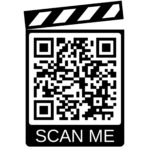Evaluation of Usability and Motivation in a VR-Based Training System – A Pilot Study with Radiology Technology Students
Aim and Research Question(s)
This pilot study evaluates whether a preparatory video improves usability and motivation in the Vitasim VR training module compared to a live demo. Research questions:
- What are the differences in the System Usability Scale (SUS) scores of the Vitasim VR training module between Group A (10 participants with a preparation video) and Group B (10 participants without a preparation video)?
- Which factors influence user motivation and experience in VR-based training for radiologic education, and what differences exist between Group A and Group B?
- What impact does a preparation video have on reducing usability challenges and improving students‘ readiness for VR-based training systems?
Background
Virtual Reality (VR) offers radiologic students safe and repeatable learning environments. Training modules such as Vitasim simulate radiographic procedures without exposing learners to radiation, allowing repeated practice and skill development. VR education success depends on usability and motivation. Poor onboarding can cause disorientation, especially in first-time users. According to Cognitive Evaluation Theory, learners feel more motivated when systems offer autonomy and non-controlling feedback [1]. Structured onboarding, such as video tutorials, can reduce cognitive load and enhance usability and confidence in VR scenarios [2].
Methods
standardized surveys via LamaPoll, including the System Usability Scale (SUS), the User Experience Questionnaire – Short (UEQ-S), the Intrinsic Motivation Inventory (IMI) and the meCUE 2.0. Data were analyzed descriptively using Excel and PSPP. The sample size of 10 participants per group is considered appropriate for usability studies, as it typically allows the identification of key usability issues.
Results and Discussion
Group A reported higher SUS and meCUE Usability scores than Group B, suggesting better perceived usability. Hedonic experience (UEQ Hedonic) and emotional aspects (meCUE Emotion) were also more positively rated by Group A. Motivational outcomes (IMI) showed small differences. However, Group A scored slightly higher in Perceived Competence and Choice. The results indicate that preparatory videos enhance usability and user experience, while motivation is less affected in short-term interventions.
Conclusion
This pilot study suggests that a short preparatory video may improve usability and emotional experience in VR-based radiologic training. A simple video intervention could support onboarding and help reduce cognitive barriers for first-time VR users. The findings require confirmation in larger studies.
References
[1] Ryan, R. M. (1982). Control and information in the intrapersonal sphere. J. Pers. Soc. Psychol., 43(3), 450–461.https://doi.org/10.1037/0022-3514.43.3.450 [2] Makransky, G., & Petersen, G. B. (2021). The CAMIL model: Learning in immersive VR. Educ. Psychol. Rev., 33(3), 937–958. https://doi.org/10.1007/s10648-020-09586-2
